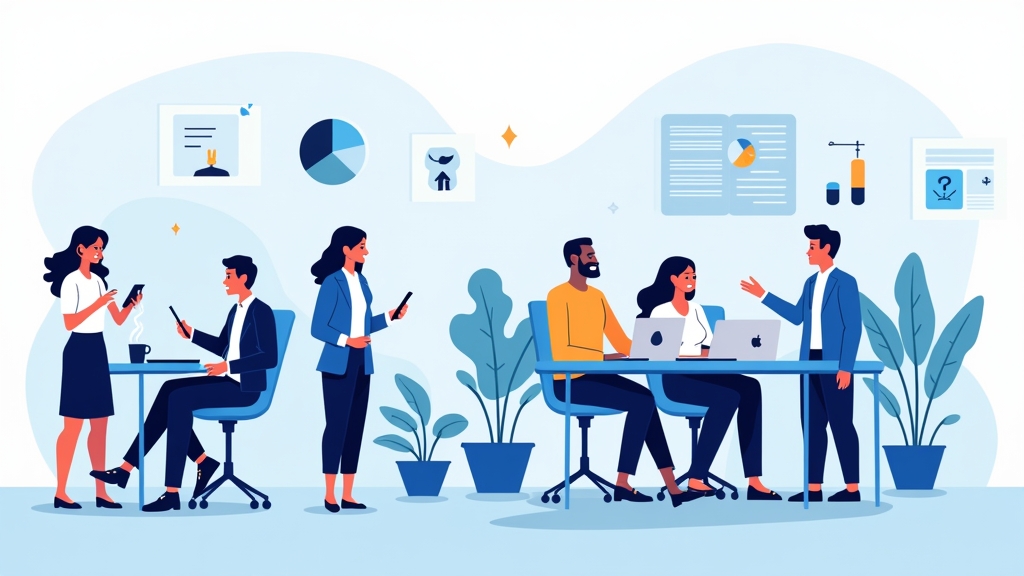advertising
How to Use Microlearning to Keep Up to Date Professionally without Overloading Your Routine
What is microlearning and why is it effective?
Imagine learning something new in just five minutes a day. It doesn't seem like much, does it? But when those minutes accumulate, the result is surprising. O microlearning is a learning approach that divides knowledge into small doses, making it easier to absorb and avoiding cognitive overload. Instead of spending hours on an extensive course, you consume short, objective content such as videos, podcasts, infographics or quizzes.
Studies show that our brains retain information better when it is presented briefly and frequently. A report by Association for Talent Development reveals that microlearning increases retention by up to 80% compared to traditional methods. What's more, it fits perfectly into hectic routines, allowing you to learn while waiting for the bus, during lunch or before bed.
advertising
But how does this work in practice? Think of a marketing professional who needs to get up to speed on the latest trends in social media. Instead of taking a 20-hour course, they can watch a 5-minute video on Instagram algorithms, read a quick article on engagement metrics and practice with an interactive quiz. Knowledge is acquired gradually, without pressure and with high impact.
Do you ever feel like you don't have time to develop yourself? Microlearning could be the solution. It doesn't require large blocks of time, just consistency. And the best part: you can start right now, without having to rearrange your schedule.
Identifying the best sources of microlearning
Not all short content is effective. To make the most of microlearning, it's essential to choose reliable sources that are relevant to your field. Platforms such as Coursera It is Udemy offer courses in pill format, but there are also free options such as specialized newsletters, podcasts and YouTube channels.
For example, if you work in technology, following the TechCrunch or the podcast "The Daily" by The New York Times can provide valuable insights in just a few minutes. For those working in the health sector, the Medscape offers quick updates on research and treatments.
advertising
How do you know if a source is good? Evaluate the credibility of the author, the frequent updating of the content and the practical applicability. A good microlearning should answer three questions: What have I learned? How can I use it? Why is it important? If the material doesn't meet these criteria, it may not be worth your time.
How about a test? Choose a topic you want to master and search for three different sources. Compare the quality and format. Do you prefer videos, text or audio? Microlearning is customizable, so find what works best for you.
Integrating microlearning into your daily routine
Now that you know where to find good content, how can you fit it into your daily life? The answer lies in "downtime" - those moments that are often wasted. Do you often check social media on the way to work? How about replacing a few of those minutes with a professional podcast?
An effective strategy is to associate microlearning with established habits. For example:
– Breakfast: Listen to a short episode of a podcast while you drink your coffee.
– Lunch break: Read an article or watch a 5-minute video.
– Before bed: Revise flashcards or take a quick quiz.
Tools such as Blinkist (which summarizes books in 15 minutes) or Anki (for revision with flashcards) can be great allies. The key is turning learning into an automatic habitlike brushing your teeth.
And if you think you don't have the discipline, try using gamification techniques. Applications such as Duolingo show how small rewards (such as streaks and points) motivate consistency. Why not apply this to your professional development?
Measuring your progress with microlearning
Learning in small doses is effective, but how do you know if you're evolving? Defining simple metrics can help. Write down how many minutes a day you spent on microlearning and what topics you covered. Review at the end of the week: What did you learn? How did you apply it at work?
Another tip is to create a "learning diary". This could be a Google Drive document or even a physical notebook. Record insights, doubts and practical actions derived from what you've consumed. For example: "Today I learned about storytelling in sales. I'm going to test this technique in my next meeting with clients."

Tools such as Trello or Notion are also useful for organizing your micro-knowledge. Create a board with categories such as "To learn", "In progress" and "Completed". This brings clarity and motivation.
Remember: the goal is not to accumulate information, but to turning knowledge into action. If you study leadership, for example, practice giving more assertive feedback. Microlearning only makes sense when it generates real change.
Avoiding common pitfalls in microlearning
Despite its benefits, microlearning has its pitfalls. One of them is too many fonts. When you subscribe to ten newsletters and follow twenty podcasts, it's hard to keep up with everything. The result? Disorganization and frustration. Choose up to five priority sources and adjust according to your needs.
Another mistake is lack of depth. Microlearning is great for introducing concepts, but complex topics require immersion. If you need to master a new data analysis tool, for example, combine quick pills with a longer course. Balance is the key.
Also, watch out for passivity. Watching a video without reflecting or taking notes is like watching a movie and forgetting the plot the next day. Ask questions, discuss with colleagues or teach what you have learned. Active learning fixes knowledge.
Finally, don't ignore practice. If you only consume content without applying it, you become a "certificate collector". How about setting yourself a weekly challenge based on what you've studied? For example: "This week, I'm going to use a new negotiation technique in at least one meeting."
Microlearning for technical and behavioral skills
Many associate microlearning only with hard skills (such as programming or Excel), but it is also powerful for developing soft skills. Communication, time management and emotional intelligence can all be worked on in small doses.
For technical skills, platforms such as Codecademy or Khan Academy offer quick exercises. For behavioral skills, try apps like Headspace (for mindfulness) or read real cases in the Harvard Business Review.
A practical example: if you want to improve your public speaking, record a 1-minute video a day on a random topic. Analyze your posture, tone of voice and clarity. Small exercises, big results.
And don't underestimate the power of professional social networks. Following influencers in your field on LinkedIn or Twitter can provide valuable insights in the form of short posts. Microlearning is everywhere - you just have to know how to filter it.
Creating your personalized microlearning plan
Now it's time to put everything into practice. Start by defining your objectives: What do you want to learn? How soon? How will it impact your career? Be specific. Instead of "I want to be better at sales", say "I want to master objection techniques in 30 days".
Then put together your learning menu. Divide it into
– Sources: Which platforms, podcasts or newsletters will you use?
– Time: How many minutes a day can you devote?
– Evaluation: How will you measure your progress?
Finally, experiment and adjust. If a method doesn't work, change it. Microlearning is flexible by nature. And don't forget to celebrate small victories - every step counts.
Ready to get started? Choose a topic right now and dive into a pill of knowledge. Remember: Great professionals are made up of small daily lessons.



